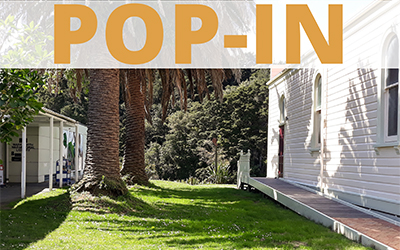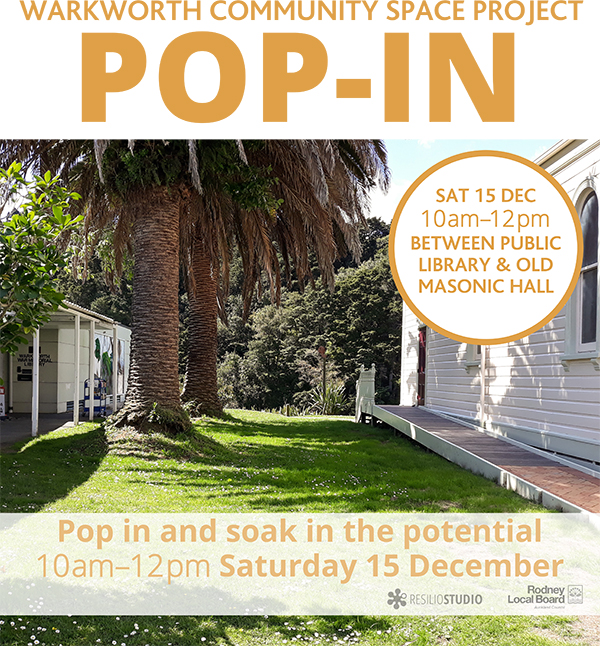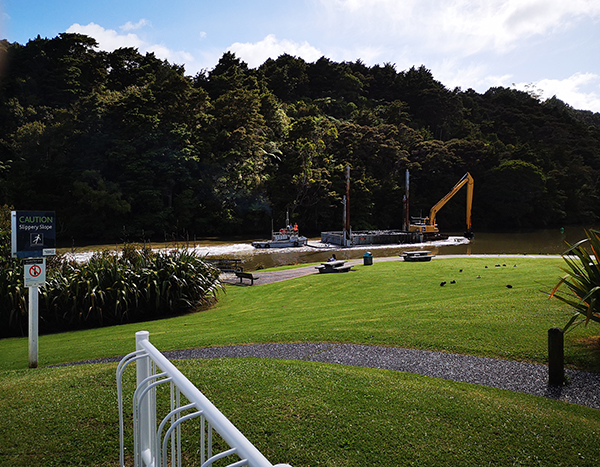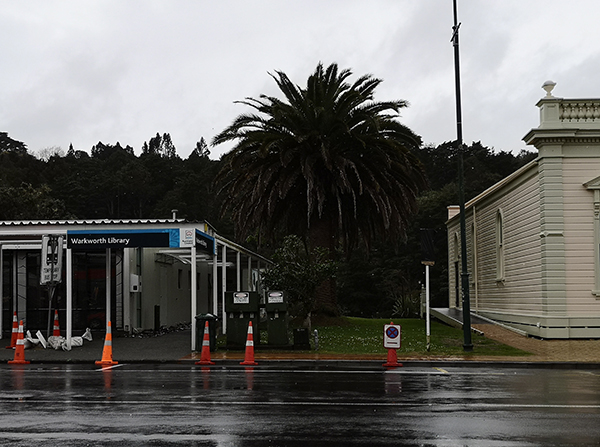Arising from ashes of the Phoenix


Better Bring a Hat: Although forecasting weather 10 days out can be fraught, the prospects for a fine open-day are entirely promising, but in any event the Old Masonic Hall will be open for respite from the elements. flyer Resilio Studio | Mahurangi Magazine
Better connecting its tidehead town to its river has been a Mahurangi Action goal since the organisation was formed 44 years and one fortnight ago.
Understandably, for a forward-looking town, Warkworth was built with its back to the river that represented the past. The future was steam trains, and although the town was to rely on river transport for its first 80-odd years, the Mahurangi River suffered ongoing disrespect and indignities, including being used as the town’s sewer and its rubbish dump.
Fast forward to 2016, and the Rodney Local Board, struggling to sift through the community’s avalanche of requests for financial support for myriad, disparate projects, hired community development facilitator Cissy Rock to talk to those championing the respective questsfirst, memorable and entirely encouraging meeting with the author was at Remedy Coffee, 1 Wellesley Street West, 11.30 on 5 July 2016. If the community was to arrive at something approaching a consensus regarding its priorities, life for the local board, it was fondly imagined, would be made much easier.
Cissy’s first report identified seven core components, which included:
- Finding ways to make Warkworth a more river-facing town
With limited budget, one such a way is the focus of the first fresh project to result from the 2016 initiative. For some, it will be a hard sell, and will be less than the game-changing project they had imagined as the first manifestation of two and a half years’ consultation. This is where the balance between consultation and leadership, if too heavily weighted in favour of the former, can leave the consulted poorly served. In this case, the much-needed opportunity to fix a poorly constructed space appears to have been firmly grasped. The changes poised to be implemented would not have been glaringly obvious to most before the event, but will, hopefully, be blindingly obvious, once effected.

End in Sight for Slippery Slope: Since a conversation he was privy to as a boy on a river-bound journey in 1958, Peter Thompson has known that the Mahurangi River would, sooner or later, need dredging or cease to be navigable. Keeping the faith for 60 years, and with the work he has masterminded solidly underway, Peter can now, and richly deserves to, dare to dream of projects ad—after dredging. image Mahurangi Magazine
The timing could not be better. The work of the Mahurangi River Restoration Trust, another of the seven core components—many would say, the core component—is well underway:
- Dredging the river
This pivotal project has also been strongly backed by the local board. Two, consecutive $20 000-contributions, and a welter of pro bono work, got the trust through the terminally despised and resented resource consent process. And it is the board’s $250 000 funding that has, at last, got the physical dredging underway. Already Mahurangi River champion Peter Thompson’s determined intention when the Auckland Regional Council-initiated the Mahurangi Action Plan in 2004, improving navigability to, and capacity of, the Warkworth town basin was always key to the tidehead town saluting its past and being more than just another Auckland suburb. That, and:
- Walkways all along the riverbank to the cement works

Inhospitable Insalubrious Space: Public transport is key to Warkworth’s future prosperity. While cars are inherently incompatible with the tidehead town reaching its potential as the Waiheke of the north, but arriving by public transport on a rainy day is currently less than uplifting. image Mahurangi Magazine
Quite why two Phoenix canariensis—Canary Island date palms—came to be planted near the side boundary of the Old Masonic Hall property may never be explained, but these specific specimens are a landscape aberration, serving to obscure the view through to the river rather than to frame it. In regard to the species, since 1 July 2010 the Auckland Regional Pest Strategy 2007–2012 rules that no person shall:
- Cause or permit any [Phoenix canariensis] to be in a place where it is offered for sale or is exhibited; or
- Sell or offer for sale [Phoenix canariensis]; or
- Propagate, distribute, breed, or multiply [Phoenix canariensis] or otherwise act in such a manner as is likely to encourage or cause the propagation, distribution, breeding or multiplication of any [Phoenix canariensis].
In Aotearoa, until the planting of Phoenix palms was outlawed, the affronting pain of being stabbed by one of their toxic frond spines was possibly the closest a child could come to experiencing snake bite.
For the fortunate, surgery was not required.
